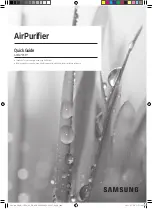
20 Information servicing
Kelvinator Air Conditioning
Information servicing
Charging procedures
In addition to conventional charging procedures, the following
requirements shall be followed:
•
Ensure that contamination of different refrigerants does not
occur when using charging equipment. Hoses or lines shall
be as short as possible to minimize the amount of refrigerant
contained in them.
•
Cylinders shall be kept upright.
•
Ensure that the refrigeration system is earthed prior to
charging the system with refrigerant.
•
Label the system when charging is complete (if not already).
•
Extreme care shall be taken not to overfill the refrigeration
system.
•
Prior to recharging the system it shall be pressure tested
with OFN. The system shall be leak tested on completion of
charging but prior to commissioning. A follow up leak test shall
be carried out prior to leaving the site.
Decommissioning
Before carrying out this procedure, it is essential that the technician
is completely familiar with the equipment and all its detail. It is
recommended good practice that all refrigerants are recovered
safely. Prior to the task being carried out, an oil and refrigerant
sample shall be taken.
In case analysis is required prior to re-use of reclaimed refrigerant.
It is essential that electrical power is available before the task is
commenced.
a)
Become familiar with the equipment and its operation.
b) Isolate system electrically.
c)
Before attempting the procedure ensure that:
•
Mechanical handling equipment is available, if required,
for handling refrigerant cylinders;
•
All personal protective equipment is available and being
used correctly; the recovery process is supervised at
•
All times by a competent person.
•
Recovery equipment and cylinders conform to the
appropriate standards.
d) Pump down refrigerant system, if possible.
e)
If a vacuum is not possible, make a manifold so that refrigerant
can be removed from various parts of the system.
f)
Make sure that cylinder is situated on the scales before
recovery takes place.
g) Start the recovery machine and operate in accordance with
manufacturer's instructions.
h)
Do not overfill cylinders. (No more than 80 % volume liquid
charge).
i)
Do not exceed the maximum working pressure of the cylinder,
even temporarily.
j)
When the cylinders have been filled correctly and the process
completed, make sure that the cylinders and the equipment
are removed from site promptly and all isolation valves on the
equipment are closed off.
k)
Recovered refrigerant shall not be charged into another
refrigeration system unless it has been cleaned and checked.
Labelling
Equipment shall be labelled stating that it has been
de-commissioned and emptied of refrigerant. The label shall be
dated and signed. Ensure that there are labels on the equipment
stating the equipment contains flammable refrigerant.
Recovery
•
When removing refrigerant from a system, either for servicing
or decommissioning, it is recommended good practice that all
refrigerants are removed safely.
•
When transferring refrigerant into cylinders, ensure that only
appropriate refrigerant recovery cylinders are employed.
Ensure that the correct numbers of cylinders for holding the
total system charge are available. All cylinders to be used are
designated for the recovered refrigerant and labelled for that
refrigerant (i.e. special cylinders for the recovery of refrigerant).
Cylinders shall be complete with pressure relief valve and
associated shut-off valves in good working order.
•
Empty recovery cylinders are evacuated and, if possible,
cooled before recovery occurs.
•
The recovery equipment shall be in good working order with
a set of instructions concerning the equipment that is at hand
and shall be suitable for the recovery inflammable refrigerants.
In addition, a set of calibrated weighing scales shall be
available and in good working order.
•
Hoses shall be complete with leak-free disconnect couplings
and in good condition. Before using the recovery machine,
check that it is in satisfactory working order, has been properly
maintained and that any associated electrical components are
sealed to prevent ignition in the event of a refrigerant release.
Consult manufacturer if in doubt.
•
The recovered refrigerant shall be returned to the refrigerant
supplier in the correct recovery cylinder, and the relevant
Waste Transfer Note arranged. Do not mix refrigerants in
recovery units and especially not in cylinders. If compressors
or compressor oils are to be removed, ensure that they have
been evacuated to an acceptable level to make certain that
flammable refrigerant does not remain within the lubricant.
The evacuation process shall be carried out prior to returning
the compressor to the suppliers. Only electric heating to the
compressor body shall be employed to accelerate this process.
When oil is drained from a system, it shall be carried out safely.
Transportation, marking and storage for units
1.
Transport of equipment containing flammable refrigerants
compliance with the transport regulations.
2.
Marking of equipment using signs compliance with local
regulations.
3.
Disposal of equipment using flammable refrigerants
Compliance with national regulations.
4.
Storage of equipment/appliances The storage of equipment
should be in accordance with the manufacturers instructions.
5.
Storage of packed (unsold) equipment
Storage package protection should be constructed such that
mechanical damage to the equipment inside the package
will not cause a leak of the refrigerant charge. The maximum
number of pieces of equipment permitted to be stored
together will be determined by local regulations.





































